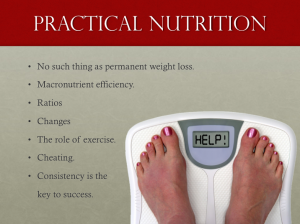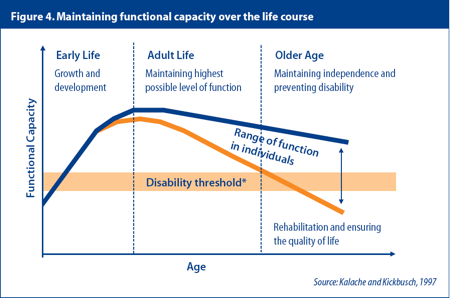Foundation Marketing: Revenue Share Programs
I believe that developing strategic partnerships is one of the fastest and most cost effective ways of building your business. It should be one of the foundation elements that receive continual focus with direct goals in every quarter.
Now one of the big problems with strategic partnerships is that local businesses are constantly approached or solicited by others to do things, display things or post things that help other people grow their business. For the business being approached this generally just takes up valuable space and is a waste of time with little to no reciprocal benefit which is why so many businesses won’t talk to you or have a standard practice of saying no.
Here are my five steps to overcoming this. Go with a giving hand and deliver real value that leads to mutually beneficial relationships.
- Interview the Expert
- Sponsor Your Community
- The Charity Lunch & Learn
- Cross Promotion
- Revenue Share Programs
In this post we’re going to cover the final step, which is Revenue Share Programs.
Well this is it the end of our journey, the easy part.
At this stage you now have a great mutually beneficial, lasting relationship with likely some of the best of the best practitioners in your community. You’ve established yourself with them by showing them real value. If your community is like mine you’ve likely taught them all kinds of new concepts towards the whole approach of attracting customers, these are all good things.
With your strong relationship in place it now makes perfect sense to directly ask them to promote you, but we’re still going to do it in a fashion that’s win-win.
Create an exclusive service package for them. You don’t need to re-invent the wheel to do this just simply re-package and re-name a trial service or group of services you’ve used in the past for client attraction.
I recommend developing some sales materials to go with, perhaps a nice sales letter, a plastic card that can be sold or a combination of both.
Create a program that appeals to their customer, validates the practitioner and ties your relationship to them as the greater good of a mutual passion to help people. The goal is to make a product they are proud to promote and one that will surely yield easy sales.
The offer that comes to mind is the one I mentioned in a previous segment of this process. We created a (name) Chiropractic & Wellness Fitness Assessment. This included two appointments where we completed a variety of assessments, compiled the results and demonstrated individualization through a one-on-one workout. In addition we offered Infrared Therapy sessions as bonus value and the best part was the programming was always developed based on recommendations from the practitioner to ensure there was a high degree of overlap and reinforcement.
In this situation rather than sharing the revenue we just gave it all too them, this allowed them to sell more than $1000 in 24 hours and generated more than 20 leads for us.
Once in place these programs take no effort on your part the business can keep selling the product you keep validating them and supplying the service. Imagine if 10 different businesses we’re doing this for you? If they only produced 1-2 leads a month even that would be an average of 3-5 new prospects for you every single week.
It shouldn’t take much to see why Strategic Partnerships should be a foundation element of your business. Start every quarter with a list of 15 and work through all the steps with all those that will respond, if by step 5 you’re developing just 1 new revenue share program each quarter it will still be easily worth the investment.
Best part, after completing this process train a member of your team to do it and pass it off.
The Simple But Critical Key to Managing Varying Fitness Levels in Boot Camp
How do you manage multiple fitness levels in your small groups and boot camps?
 This is one of the biggest challenges fitness trainers have: trying to keep the beginner ‘Mrs. Jones’ motivated and not overwhelmed while challenging the ‘Mrs. Smith’s’ in the group that are seasoned athletes.
This is one of the biggest challenges fitness trainers have: trying to keep the beginner ‘Mrs. Jones’ motivated and not overwhelmed while challenging the ‘Mrs. Smith’s’ in the group that are seasoned athletes.
Do you offer beginner and advanced sessions? The downside of this solution is trying to balance times so that all your clients are happy. It can be a scheduling nightmare.
Wouldn’t it be great if you could have beginner Mrs. Jones training along side the advanced clients like Mrs. Smith? How would that look?
I’m Shawna Kaminski and I run very successful fitness boot camps in Calgary, Alberta. I’ve found some cool ways to solve this issue that I’d like to share with you.
Before going on, I want to make it clear that ALL your clients WANT and expect a challenge in their training. Whether they are just returning to fitness or fitness veterans, they ALL want a challenge. And this is YOUR challenge to deliver this. You don’t want to deflate beginners while having veterans step up their fitness game.
How can you do this?
Your answer? ‘Timed sets’.
Timed sets allows both the grandma’s and the fitness buffs to train together while each person will be challenged at their own level. Clients get tired of counting reps. New-to-fitness people get discouraged when they barely get started when the fitness veteran is already done the reps you prescribe. The veteran says ‘now what?’ and then you have to come up with something else for them to do. Timed sets solve this problem. The veteran will do more work, the beginner will do less, and no one is the wiser as you easily control the session.
Here’s a great challenge workout for your group. You’ll pair strength and cardio sets back to back. Ask your clients to count their reps in the first set and then try to match their reps for each subsequent set. This helps clients create their own challenge and helps them maintain their intensity through the course of the set.
Do 30 seconds of each exercise (strength and then cardio) with a five second transition. So for this set, you can set a timer with a 30/05 repeat for 9 sets:
Weighted squat/Burpee
Push up/mountain climber
Renegade row/squat jump
Bicycle crunch/skater jump
Plank recovery (30 seconds)
Repeat twice more (total of three times through for 15 minutes of sweaty fun)
The beauty of this is that you can modify and intensify exercises easily so everyone is training side by side. Training volume is controlled and everyone gets a great workout. Everyone is set up for success. Reps everyone gets in their first set will be a ‘doable’ challenge for them to try to reach for in subsequent sets.
You can’t compare this to a workout that has a rep scheme where Mrs. Jones when faced with 10 push ups may feel like quitting and Mrs. Smith is done and bored already. If given a 30 second set, Mrs. Jones may do 5 push ups while Mrs. Smith does 15. Also, we all have clients that ‘count by 5’s’ so if your workout is based on counting reps, some get done before some people even start.
Your workout flow is managed so no one is done and waiting and everyone feels successful by getting at least a few reps of each exercise. Everyone gets a balanced workout, since the workout structure and time is controlled. By using timed sets, rep counting is only done for personal accountability and it’s less likely that people will ‘cheat’ since they have to beat or match their own scores.
I’ve been running my own fitness boot camps since 2007 and when surveyed, my clients prefer timed set workouts best. It frees them up to concentrate on exercise form and not on the number of reps they need to do.
I highly recommend using timed sets with your boot camp clients and small groups.
Here’s a short video explaining how timed sets can benefit YOUR boot camp:
[youtube]http://youtu.be/2gMAI4fsuoc[/youtube]
 If you’re looking for challenges for YOUR boot camp, take a look at Challenge Workouts: Boot Camp Edition and see if it’s right for you. You’ll find all kinds of fitness challenges to add to your boot camp to up the excitement and results in your camp.
If you’re looking for challenges for YOUR boot camp, take a look at Challenge Workouts: Boot Camp Edition and see if it’s right for you. You’ll find all kinds of fitness challenges to add to your boot camp to up the excitement and results in your camp.
About Shawna
Shawna Kaminski is a retired schoolteacher of 20 years who’s found her passion in the fitness industry. She’s parlayed her ability to teach and her love of training into programs like her fitness boot camp. Shawna consistently has over 100 clients attend her boot camps monthly. She’s retained many of her clients for nearly a decade. Shawna is in her late forties, is a mother of two teenagers and understands how busy life can be. In addition to running her fitness boot camp, she does online coaching and training as well.

How-to Stay Focused and Create New Inspiration at Will to Continually Kick Ass and Grow Your Business
 Do you ever feel overwhelmed in your business? Do you ever feel like maybe it’s just not worth it? Or that it just isn’t going to work?
Do you ever feel overwhelmed in your business? Do you ever feel like maybe it’s just not worth it? Or that it just isn’t going to work?
I’d be shocked and question whether you were really being honest with yourself if you said no the above. The truth is as an entrepreneur you are going to feel all of those things, and probably more often than you want.
I think because, as trainers, we’re such analytical people; so detail oriented that we really get hung up on trying to make sure each step we take is perfect. When things are less than perfect it seems to send many of us into a downward spiral of in-action, it’s like we become paralyzed with fear or so discouraged it’s hard to continually put one foot in front of the other.
Maybe this is a little dramatic, but then for a newer trainer it might not be at all. I remember how I felt, and still do some days. Being in business isn’t easy, and what we do as fitness professionals requires massive amounts of emotional energy. When things don’t quite turn out the way you expect it saps that energy.
At the core of it all the only way you can ever fail is if you fail to act.
Unfortunately burnout and in-action is inevitable so what do you do about it?
1) Make sure you make lists, and don’t overwhelm yourself. Only choose 3-4 things each day as “critical to get done.” Expecting to much of yourself each day sure leads to burnout.
2) Slash and burn. Truth is we all do too much shit that doesn’t move our business forward, saps emotional energy and wastes time. Get over your scarcity mindset and slash and burn what doesn’t matter or find ways to delegate it to others.
3) Every single one of you has someone in your network who would be willing to take on a few tasks to help you out. Ask them, service trades are a great place to start but never be afraid to pay people to do stuff that isn’t directly making you money. Your greater focus on growing your business will easily replace the money.
4) Each month review your list, streamline tasks to stay focused on what your good at and pass off or get rid of the rest.
5) Be careful of passion projects, the things that might lead to something, the things that are really fun to work on, the reality is they aren’t contributing immediate value best to set them aside and focus on what matters. Now everyone needs a hobby so I suggest adopt the Google philosophy allow yourself that 10-20% of your time to work on passion projects or those labours of love.
6) Discover your “magic time.” What hours of the day are you the most productive? Everyone seems to have that time where you can accomplish in minutes what might otherwise take hours, focus dials in and you just get it done. What are you doing to protect this time? Don’t let anything get in the way, be sure to delegate or eliminate responsibilities that take up this time and may otherwise hold you back.

Feel so fortunate to live so close to a place like Banff, the Rimrock hotel is one of my wife and I’s favourite “burnout recovery” getaways.
7) Last but not least, go have fun. There’s only one reason to work so hard and become successful. To enjoy the things you do outside of work. Recently I went to Peru on a whim for this very reason, it was time to step away from civilization in an effort to refresh, re-charge and become inspired.
Inspiration drives action; burnout is a sign that inspiration is fizzled. A job is something you might like, a career is a job where you continue to invest in yourself and a business allows you to love the process of earning your financial freedom. Lacking motivation shows you that you’ve pushed it too far or your handcuffed by things you shouldn’t be doing, recognize and act upon this and you will e continually propelled forward.
Foundation Marketing: The Charity Lunch & Learn
Over these next few weeks I’ll be posting this entire series detailing my strategies on effectively developing strategic partnerships in your community.
I believe that developing strategic partnerships is one of the fastest and most cost effective ways of building your business. It should be one of the foundation elements that receive continual focus with direct goals in every quarter.
Now one of the big problems with strategic partnerships is that local businesses are constantly approached or solicited by others to do things, display things or post things that help other people grow their business. For the business being approached this generally just takes up valuable space and is a waste of time with little to no reciprocal benefit which is why so many businesses won’t talk to you or have a standard practice of saying no.
Here are my five steps to overcoming this. Go with a giving hand and deliver real value that leads to mutually beneficial relationships.
- Interview the Expert
- Sponsor Your Community
- The Charity Lunch & Learn
- Cross Promotion
- Revenue Share Programs
In this post we’re going to cover the third step, which is the Charity Lunch & Learn.
 Ok this step is really critical and is an absolute powerhouse when it comes to organizations that can bring groups of 10-20 or more people together.
Ok this step is really critical and is an absolute powerhouse when it comes to organizations that can bring groups of 10-20 or more people together.
Every business in the community quickly realizes that part of their brand or community perception will be as a result of charitable contributions or their efforts to give back to the community. This is especially true in smaller markets like mine.
You know have a budding relationship with some great strategic partners. This time I suggest you contact them and attempt to learn what charitable organizations they like to support. Once this information is know suggest to provide your time and knowledge in the form of a charitable event that both your and their audience could attend. It’s always better to encourage this even be held at their location (if that’s at all viable) to ensure they see how they would be getting the maximum benefit.
Essentially you want to give them a reason (and preferably all the done for you tools) to promote this event internally. As the sheer virtue that they are hosting a charitable event lends to their brand, credibility and reputation in the community.
People will attend the event for just a donation. Your job is to deliver highly valuable content, information that they might use and take away immediately. I suggest nutritional lectures with easy recommendations to immediately implement tomorrow; or home or office workouts with demonstrations and the reason why it’s important.
What you’re not going to provide is handouts.
Always educate, and in truth we all need to make an attempt to be more eco-friendly. You must never attempt to sell your services at an event like this. Instead your goal is to make it easy for people to want to receive more CONTENT from you, not necessarily information about your services (that comes later.)
Sure some will immediately ask and of course treat these like the warm leads that they are but your primary mission is to educate and most importantly leave people wanting to opt-in.
Leave a clipboard and a pen at the back of the room when you conclude your only offer should be things like electronic handouts or the promise of a bundle of more great content if people will leave you their name and email. Your goal is to leave with contact info of at least 65-70% of your audience.
These people are now part of your marketing funnel and you can directly warm them up to qualified leads that become customers. In two such events last fall I had a combined audience of about 65 people over the two events and this lead to well over $30,000 in new programs within out studio in just the days that followed the events.
In the format of the charity lunch and learn you majorly enhance your relationship with your strategic partner, value to them, you and your audience and ultimately position yourself for a stream of warm leads (and grow you contact list.)
Speaking engagements are incredibly powerful in this format they can be a game changer for your business.
Next time we’ll talk about finally establishing direct cross promotion.
Foundation Marketing: Sponsor Your Community
Over these next few weeks I’ll be posting this entire series detailing my strategies on effectively developing strategic partnerships in your community.
I believe that developing strategic partnerships is one of the fastest and most cost effective ways of building your business. It should be one of the foundation elements that receive continual focus with direct goals in every quarter.
Now one of the big problems with strategic partnerships is that local businesses are constantly approached or solicited by others to do things, display things or post things that help other people grow their business. For the business being approached this generally just takes up valuable space and is a waste of time with little to no reciprocal benefit which is why so many businesses won’t talk to you or have a standard practice of saying no.
Here are my five steps to overcoming this. Go with a giving hand and deliver real value that leads to mutually beneficial relationships.
- Interview the Expert
- Sponsor Your Community
- The Charity Lunch & Learn
- Cross Promotion
- Revenue Share Programs
In this post we’re going to cover the second step, which is to Sponsor Your Community.
 Ok in this step you’re going to re-approach the interviewed experts from step 1.
Ok in this step you’re going to re-approach the interviewed experts from step 1.
We’re going to further enhance our relationship with them by “sponsoring them.” There’s a couple different ways we can do this, but the premise will be a low-cost (or free can often be better) trial offered to them or a select group of their customers as a reward and recognition for being someone doing something great in the community.
Generate materials to give it the right feel. For example I recommend generating a certificate and even putting it in a frame to recognize that you feel they stand out in the community. Then generate some small vouchers that explain the trial program. An example might be the “21 Day Hairdresser Boot Camp” where if the sponsored business was a salon you would invite each of the stylists to try your boot camp for 21 days as a reward for being awesome.
A program like this may have immediate value for the business owner as it’s a perk or reward for their team that had no cost to them, something that provides them additional value just for working there. In addition even if none of these stylists did anything other than attend your trial you know this audience converses with people all day long and by virtue should provide you with referrals (more on this in a future post.) Truly if you over deliver in that 21 days it should be easy to convert a few of the staff to ongoing customers.
Your offer could also be extended to provide so many vouchers to be given to top or favourite customers, further enhancing the value in the form of a thank you or an appreciation. With no cost to the business this is a high value way for them to want to send you customers.
At this stage you really have pushed the envelope of creatively creating a mutual win-win. Businesses are skeptical and reluctant so be persistent. This is why this is step 2 as first completing the interviews will ensure a stronger positive response as each steps comes closer to direct cross promotion.
Next time we’ll discuss The Charity Lunch & Learn.
Foundation Marketing: 5 Steps to Strategic Partners
Over these next few weeks I’ll be posting this entire series detailing my strategies on effectively developing strategic partnerships in your community.
I believe that developing strategic partnerships is one of the fastest and most cost effective ways of building your business. It should be one of the foundation elements that receive continual focus with direct goals in every quarter.
Now one of the big problems with strategic partnerships is that local businesses are constantly approached or solicited by others to do things, display things or post things that help other people grow their business. For the business being approached this generally just takes up valuable space and is a waste of time with little to no reciprocal benefit which is why so many businesses won’t talk to you or have a standard practice of saying no.
Here are my five steps to overcoming this. Go with a giving hand and deliver real value that leads to mutually beneficial relationships.
- Interview the Expert
- Sponsor Your Community
- The Charity Lunch & Learn
- Cross Promotion
- Revenue Share Programs
In this post we’re going to cover the first step, which is to Interview the Expert.
I suggest between Google and your knowledge of the locale you find 15 top experts in your area, highly respected, well known, high traffic generating complimentary professionals that cater to your desired client. In fact you should recreate this list every 90 days and begin this whole process anew to continually establish more credibility in your marketplace.
Contact each potential expert to see if we can arrange a 5 minute interview on camera. This is why we start with 15, between reluctance and aligning schedules that list of 15 will likely become 6-9 businesses that will be your focus for the next 90 days.
During the interview ask them 3 questions that accomplish our specific goals.
1) Ask them to first introduce themselves, share what their key product or service is and then ask them for tips or suggestions on how people using this product or service will get the most from it. The goal is provide real content to help people get more value from this person’s product or service.
Ex. Chiropractor – What can people do after treatment at home to ensure they receive the most benefit from their adjustments?
2) Your second question is the loose opportunity to sort of talk themselves up. Ask them about what the key benefits are for people that use products or services such as there’s on a regular basis.
Ex. Massage Therapist – What lifestyle changes are people likely to experience from using massage on a regular basis?
3) Finally ask them about how being fit or regularly active may also contribute to the effectiveness of their product or service.
Ex. Hair Stylist – They say, “80% of looking good is feeling good” do you think people that are regularly active and get their hair styled tend to be more confident and what impact does that have on their day to day life?
You want to appear in these videos with the person you are interviewing. These videos should then be posted on YouTube. The names and descriptions of these videos should be direct matches to the name of the business you interviewed. This will ensure the videos begin to show very quickly underneath their organic listing for their business and as we know from the behaviours of people on the internet they are more likely to watch this video. You are immediately providing third party validation for their business, able to drive their customers to your webpage via a link in the description and borrow and establish greater credibility by appearing in multiple videos with multiple experts in your community. This is why it’s important to choose the well-known experts that may have the best reputation and the biggest audiences.
Make sure to post these videos on your website as well and promote them to your list. The goal is to have that businesses customers see the video as your own list of clients and contacts. From this two important things can happen.
1) As I mentioned the views provide third party credibility to that expert and provide a measure to which you can immediately validate your efforts to provide them value and bring them new clients. (I have coaching clients who had videos that received well over 100 views in just a few days and every time this impressed the expert that was interviewed.) This opens the door for us to re-approach them with the next step in our process and the Law of Reciprocity will leave them much more likely to accept.
2) Secondly as I also mentioned when you post these on your website you instantly establish to your audience a high level of credibility. After all you must be the go to expert if you appear with all these other top experts in your community.
That wraps up the correct process for the first stage of developing effective strategic partnerships. Stay tuned in the coming weeks for a detailed walkthrough of the other stages.
Personal trainer sales funnel
Running a successful business requires having a sound sales funnel. A sales funnel describes how you get, keep and grow the lifetime value of your customers. It is a great way to describe the way that people move through your personal training business and the strategies that you can use to increase the lifetime value of each customer.
If you are able to sign a customer up for a six-month block of training sessions, then they are far more valuable then someone trying a one-time teaser session. This occurs due to the difference in the approach that you create as part of your marketing strategy. The smart personal trainers know how to sell their services and promote themselves. They also know how to make it very easy for people to get into their sales funnel.
As an example, they can do this by offering a very simple way to get started in the sales funnel. This could be signing up to the free newsletter, or buying a low priced report. Whatever the first step in your sales funnel is, you need to have it laid out so that you can measure how effective it is.
From here, you then offer your prospects the chance to move further down the sales funnel. This could be an interview, or a free introductory session. In the case of a personal trainer, you need to have contact with the prospect and convince them into a buying decision. It is a good idea to have a number of different options for the prospect to choose from.
You could have a starter training pack, consisting of 4 sessions. This could be used for first time clients as a way to give them a measureable result in one month. You can also have a 3 and 6-month training program designed with specific results in mind. You can then match the prospects desires to the programs you offer. There are many variations that personal trainers can offer, so you can be flexible in the approach.
You need to be confident in your sales approach and explain exactly why prospects should sign up for a long duration of training sessions with you. You also need to explain the results clients can gain and set achievable goals that will motivate the prospects. If you can show them these things, then you will be much more likely to increase your sales rate.
Remember that having a clearly defined sales funnel is very important as it makes your marketing strategy much more scientific and measurable. You can then change parts of the offer and see which generates the best response.
Remember that you need to have different price points in your sales funnel. Never assume that everyone is conditioned by price. That is not the case. There are many people who only want to buy the very best. As such, you should have a high-end program that caters to these people. You will find that a small percentage of people will take this option, and this will bring in a substantial source of income.
Your Fitness Marketing Sales Methods
My coaching group has really grown and as it’s grown I’ve continually been exposed to more situations, entrepreneurs starting out, those with big teams, and a variety of types of organizational structure.
Through each situation I seem to always come back to two different types of sales situations.
1) Primary sales person meets with every single prospect face-to-face and one-on-one.
This is certainly the least efficient method time wise but in truth if I were starting over it’s what I’d do, and is what I encourage most of my coaching clients to do until they are too busy to practically continue in this fashion.
By meeting with each prospect one-on-one you are in the best position to rapidly improve your language, your ability to identify hot buttons and to effectively fill the role of assistant buyer. In my opinion our version of sales is not really about selling but rather assisting the customer to gain the knowledge and trust they need to make it “really easy to try.”
Your end goal may be automation (which it should be) but for the fastest growth with the best conversion you will grow faster doing it this way.
Develop static components:
- Emotional questions to help people identify why they’re here and why they should make a decision today.
- Features and benefits that overcome their potential objections and increase their trust and comfort with what you offer.
- Risk reversal through guarantee.
- Continually ask for “yes’s” and affirmations throughout your conversation.
- Don’t present too many options (no more than 3 ideally) before asking for the sale, it has to be easy and comfortable for them to make a decision.
I’d recommend this process in pretty much every sales situation until you are too busy to do otherwise, whether it’s a consult or a trial of any kind. If it can’t be done face-to-face you can do some on the phone but this will in turn reduce the effectiveness.
When it’s no longer reasonable to do this (which we still do many this way even after 6 years, a strong reason we have so much control and understanding on our lead generation and conversion) begin to automate through standardized conversion systems.
2) Run aggressive short-term promotions with standardized upfront offers to immediately convert.
In this mechanism you can attain amazing results if you can fully dial in the language that’s used to explain, validate, justify and upsell leads coming in on a high interest trial. If you try this early and can’t maintain 70+% conversion I strongly urge you to continue to do as many sales appointments face-to-face as possible to continue to dial in your system.
In this approach we’re simply focusing on consumer logic and behaviour. The primary challenge with upfront conversion is a lack of trust. The logical way to overcome this is strong risk reversal and upfront value.
In this approach each prospect is qualified by their interest in buying a short term program such as our recent 10 Class Pass. Upon inquiry the interest in purchasing is first solidified and validated, at that point they’re offered a logical upgrade to a full month of unlimited service for a marginal additional fee. This sets the stage of “exceeding expectations” with tremendous value and lends a little to overcoming the lack of trust since we don’t have a prior relationship.
The next step is to lay out the risk reversal, explaining that for the duration of the service there is a full money back guarantee so their investment, even discounted, is truly risk free.
Now we rely on win-win logic to ensure continuation. Upon acceptance of the risk reversal we inquire whether they’d like to save even more money, which of course we all want to save money. By providing a discount an immediate discount on the next month and a small token discount on all months of service and re-affirming the risk free guarantee we create a situation for the consumer where logic suggests they may as well take advantage because they can change their mind later with no penalty and minor inconvenience. This is the reason for the discount, that discount has to make the inconvenience of changing their mind seem small.
With the right language this all makes sense to the consumer. I may only want to try but if I like it, it makes sense to choose my continuation service now because the savings are big, the risk is small, and the inconvenience of changing my mind is acceptable. All that’s left is to do what you’re good at and over deliver on the training experience you provide.
By combining these two systems it opens the door for delegation to key employs. It creates opportunity to systemize lead generation and improve customer service through a consistent method of making it easy for each prospect to want to convert. When we stop continually creating the problems that arise are continually minimizes as there are not too many new problems when we’re always doing the same thing.
Is The Fitness Industry Ready For The Boomer Explosion?
Do you presently train many boomer or senior clients? Do you know how to effectively attract what is likely to become the largest unserviced training client market on the planet? I know this is an area of my business that could stand significant growth and learn about this I’ve turned to my friend and colleague Dr. Dan Ritchie.
Here’s what he has to say…
 In 2013 Baby Boomers will be turning 68 years old. The largest segment in our economy, with the largest percentage of wealth will be turning to the fitness industry for help with their aging bodies. The number of quote “special populations” that will be seeking out fitness professionals is about to reach a tipping point. Here is just a sampling of some of the conditions a boomer client might present with: Joint replacements (often 2), osteopenia, sarcopenia, cardiovascular disease, diabetes, metabolic syndrome, obesity, arthritis, Parkinson’s, peripheral neuropathy, cancer. Many will present with multiple challenges, this all on top of a deconditioned body with limited fitness ability. However the situation is not bleak or discouraging if one is readily prepared for the challenge. This is not your average client seeking a flat tummy, or sexy love handles.
In 2013 Baby Boomers will be turning 68 years old. The largest segment in our economy, with the largest percentage of wealth will be turning to the fitness industry for help with their aging bodies. The number of quote “special populations” that will be seeking out fitness professionals is about to reach a tipping point. Here is just a sampling of some of the conditions a boomer client might present with: Joint replacements (often 2), osteopenia, sarcopenia, cardiovascular disease, diabetes, metabolic syndrome, obesity, arthritis, Parkinson’s, peripheral neuropathy, cancer. Many will present with multiple challenges, this all on top of a deconditioned body with limited fitness ability. However the situation is not bleak or discouraging if one is readily prepared for the challenge. This is not your average client seeking a flat tummy, or sexy love handles.
I like to show boomer or senior clients that they are on a progression or a trajectory through the aging process. Now there are some things you cannot modify or change on that aging course. For example you cannot change your gender, your age, genetic factors, vision problems, but as fitness professionals we can impact lifestyle and facilitate a training program that will maintain high levels of function for your clients into their 90s.
This model I use in every consultation with a client over the age of 55. This really shows that as individuals there is a tremendous range of function that our future may hold, and exercise may be the difference between golfing in our 80s-90s or a nursing home.
This chart depicts the trajectory that you are on as you age. You notice there are two trajectories pictured one that drops below the disability threshold and one that stays above it, which one would you choose? I fully believe that most older adults should follow the higher trajectory, and in many cases lifestyle is the significant separating factor…..so in a simple sense that choice is up to each individual. I actually believe this should make for a lifetime client. If you sign someone up to train at the age of 65 you might have them as a client for 5-20 years! This is not the 34 year old looking to drop weight and then drop you as a trainer.
I believe the “new senior” client will want nothing to do with the senior fitness programs we have seen in the past. Boomers are not taking aging lying down, to give you an example two recent clients were training for outcomes such as climbing Mt. Kilimanjaro (current client age 55) or riding bikes for several hundred miles in France countryside (current client age 70).
I believe the Fitness market for Boomers and Seniors is poised to explode for those fitness professionals that are prepared. This isn’t going to be a small niche market, but it will be where the most successful and stable fitness businesses will thrive for years to come. Keep in mind the young baby boomers are still late 40s early 50s and will want to stay young and active for 40 more years (or your entire career).
Dan M Ritchie, PhD, CSCS, HFS-ACSM
Dan Ritchie, has a broad background in the fitness industry including training and management in commercial and university/hospital-based fitness, for-profit, not-for-profit and educational facilities. His primary areas of expertise are in personal training for special populations (pregnant women, those with chronic disease and/or disorders such as Parkinsons, multiple sclerosis, cerebral palsy, Fibromyalgia and Alzheimers, etc.). He has participated in state funded research on exercise for Alzheimer type severe dementia and regularly presents at national and regional conferences. He is a past Board member of the Midwest American College of Sports Medicine and was nominated for the ACSM National College Board of Trustees in 2008. He has been the Enhance Fitness Master Trainer for the State of Indiana since 2007. While at Purdue, he received a Lynn Fellowship and a National Strength and Conditioning Association research grant, and in 2009 his Ph.D. in Health and Kinesiology, with a minor in Gerontology.
His experience also includes:
- FallProof Instructor Certified, from California State, Fullerton, 2006-present
- 2005 Thesis of the Year Award from University of Wisconsin-Whitewater
- 2004 Graduate Student of the Year, American College of Sports Medicine, Midwest Chapter
- 2005-2007 Student Affairs Committee, ACSM
- 2005-2007 Board Member Midwest American College of Sports Medicine,
- 2008 Nominated for ACSM Board of Trustees
- Enhance Fitness Master Trainer for State of Indiana 2007-current
Presented at Amercian College of Sports Medicine, National Strength and Conditioning annual meetings, Athletic Business Conference, National Council on Aging annual meeting, World Congress on Physical Activity and Aging
Building your mailing list
As a personal trainer, you need to be constantly working on building your mailing list. Your mailing list is of primary importance to your fitness marketing methods, so you need a way to measure if your current strategy is working or not. There are many ways that you can build your mailing list, which are explained below.
Offer an incentive to sign up
If you have a sign up page or pop-up advert on your website, the easiest way to increase your sign up rate is to offer an incentive for people to sign up. Some of the things you can do are to offer a free report, free audio, video or something else of value. It needs to be something that people will receive instantly once they input their name and email address.
Add a money value to your newsletter
A very method of increasing your mailing list is just to add a money value to the newsletter that you send out. Of course, if you do this as part of your fitness marketing strategy, you need to offer information of real value. It is fine to make offers in your emails, but you also need to offer high quality content on a consistent basis.
Use PPC marketing
In order to build your mailing list, you need to bring in more traffic to your website. The easiest way to do this is with pay per click marketing. You can set-up an account in minutes and start driving traffic in under thirty minutes. As long as you have the funds, you can drive as much traffic as you want. This is a great way to test the offer you are making on your website.
Contact other marketers
If you want to build up the size of your mailing list then you can contact other fitness marketers in your community. Offer to give them some content in exchange for them sending the material to their subscriber list. This is a great way to get high quality subscribers on your list without spending any money. Remember that you need to target local businesses if possible, so that you can contact the new subscribers and try to sell your personal training sessions.
Use articles
Another very simple method to increase your mailing list without spending any money is to create and post articles on the Internet. Inside the articles you can post a link that goes directly to your sign up page. This will direct people to get more information from you, if they liked your article.
Take out an advert in the newspaper
In order to build a list of local subscribers you should take out an advert in the local newspaper. If you can get a job as a weekly writer or columnist then this would be even better. The idea is just to offer good information and then tell people where they can learn more from you. Using this fitness marketing tactic is an excellent way to increase the sign up rate of your mailing list.
- « Previous Page
- 1
- …
- 6
- 7
- 8
- 9
- 10
- …
- 24
- Next Page »







 YES! Contact me today to schedule a FREE no obligation consultation and trial workout.
YES! Contact me today to schedule a FREE no obligation consultation and trial workout.